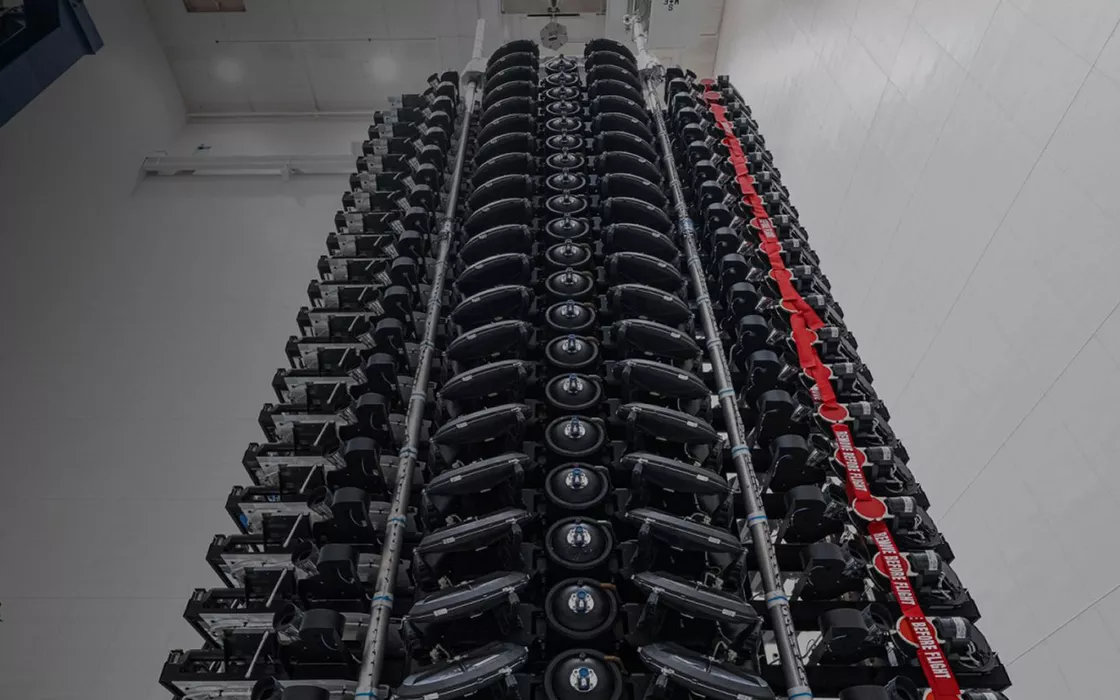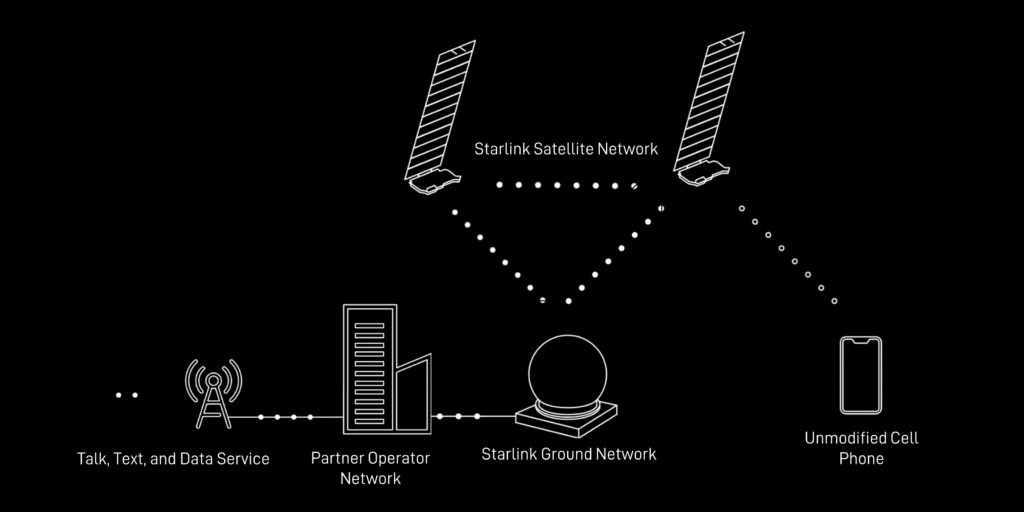The Elon Musk-owned company today announced a new service called Starlink Direct To Cell. This is an innovative proposal that relies on Starlink satellites and will allow us to provide instant messaging during 2024 and voice, data and IoT services by 2025.
Thanks to the use of satellites operating in the LEO band (Low Earth Orbitbetween 300 and 1,000 kilometers from the Earth’s surface), lo data exchange via satellite even for the most intensive applications it has been a protagonist again for some time now. The various manufacturers, with Apple in the lead, are doing their utmost to allow users to send and receive data via satellite with 5G smartphones. The possible ones applications are rather limited for now: Apple’s idea is to use satellite communications, for example, in emergency conditions; to report the user location when the terrestrial mobile network does not offer coverage.
Starlink Direct To Cell: satellite communications are once again the protagonists
The purpose of Starlink Direct To Cell is, once again, to fill the gaps in cellular networks, allowing you to connect to the Internet anytime and anywhere, from anywhere, even the most remote. The chief engineer of SpaceX, a company also owned by Musk, had previously indicated that Starlink would start the beta service for direct connection with cellular devices T-Mobile around the end of 2023. In addition to T-Mobile, Starlink has signed similar agreements with others telecommunications operators in various countries.
To enjoy the direct connection with the satellites of the Starlink constellation, the latter are equipped with an eNodeB modem. Abbreviation for Evolved NodeB, eNodeB is a term used in mobile communications networks (LTE and 5G) to refer to a base station which plays a key role in high-speed wireless communication networks. The eNodeB modem works like a mobile phone tower, with the only difference that instead of being installed on the ground, it operates in space. The approach allows you to cover areas which would otherwise be difficult to reach with traditional communications infrastructures.
The advantage for telecommunications operators is that Starlink, thanks to the eNodeB modem, becomes a partner like many others for the roaming. Furthermore, data transfer to and from Starlink satellites occurs using the frequency bands authorized in their respective countries.
The company confirms that the new satellites called to provide the Starlink Direct To Cell service will be launched and deployed in orbit with additional Falcon 9 and Starship missions. Once positioned, the satellites will immediately connect via a laser connection to the rest of the Starlink constellation to provide global connectivity. As already happens for satellites already in orbit.
Who will embrace Starlink Direct To Cell in Europe?
While Starlink has already revealed the service’s initial partners in countries such as the USA, Canada, Switzerland, Japan, Australia and New Zealand, it is currently not known which telecommunications operators will support Direct To Cell in Europe.
The page dedicated to Direct To Cell currently appears intended for connectivity and service providers who can register and request more information on how to participate in the initiative, offering new advantages to their respective customers.
The images published in the article are taken from the Starlink website.


